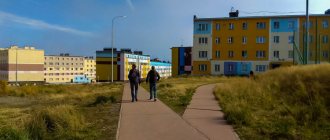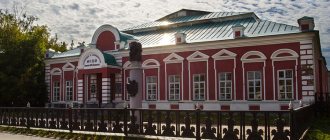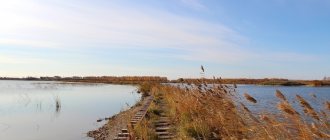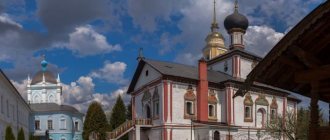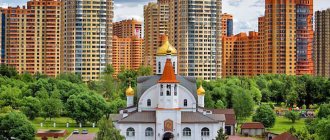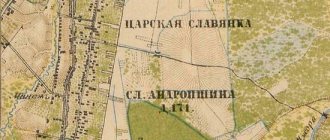Derbent is located on the territory of modern Dagestan. The earliest mention of the settlement dates back to the 6th century BC. The author of such a “memoir” is an ancient Greek geographer named Hecataeus of Miletus. Archaeological excavations have brought evidence that the city is at least 5,000 years old, making it one of the oldest cities in the world.
Derbent is called differently. Some people like to repeat that this is “the most ancient city in Russia”, others emphasize that this is a city-“open-air museum”, the Arabs - the founders of the oldest districts of the city called it “Bab al-Abwab” (“gate of gate", "main gate"). The city is now filled with a huge number of museums. In Derbent, it is believed that more than half of the city is a museum-reserve, in which there is a whole complex of stone structures, many buildings dating back to the sixth century BC. The complex includes a fortress called Naryn-kala. It used to serve as a defensive checkpoint for many centuries; few fortresses can boast of the length of history that this post has. The mosque, which is located on the territory of the complex, deserves special attention. It is called the Juma Mosque. It was built back in the eighth century BC. Juma is the oldest mosque in Russia. The temple was taken over by the Arabs, who converted it into a mosque. But the temple was built long before the first Arabs appeared in Derbent. Therefore, the entrance to the mosque is not from the north, as it should be, but from the south. In front of the mosque is a 15th-century madrasah.
Derbent stands on the shores of the Caspian Sea, on a narrow strip up to 3 km wide between water and mountains. Once upon a time (even when there was no city here), this strip of land was a caravan road from Europe to Asia and was called the Caspian Passage. Whoever tried to seize this passage, and as a result, the landowners who lived in these places, unable to calm down the inhabitants of the steppes, decided to block the Caspian passage.
Similar publication: History of the city of Lansk in Poland
So, in the 6th century AD. a whole defensive complex appeared here, completely blocking the entire passage. These fortifications began with a citadel located on the top of a hill (where it still stands to this day), and stretched along two parallel walls that went down and closed far into the sea (now only fragments of these walls have survived). Since then, Derbent was completely protected from any attacks, and in 1813 the city, along with the rest of Dagestan, became part of the Russian Empire.
Magali
Magali (translated from Arabic as “neighborhoods”) is the area from which the history of Derbent as a city began. The oldest urban area. Magals are located directly under the Naryn-Kala citadel, in the upper western part of the city and are neighborhoods with one-story stone buildings. There are no apartment buildings here.
There are 9 mahals in total. The highest one is located, right under the fortress. This part of the city is quite unique. Magals give the city an oriental flavor, reminiscent of Derbent’s special past. One-story houses stuck to each other, leaving almost no space for passage. The streets here are narrow and crooked. Just like some ancient Baghdad.
Over the long history of the city, the mahals have changed little. Tall mansions have just appeared in some places, and even billboards on the walls of houses make you remember that you are not in a medieval eastern city, but in modern Derbent. Most of the city's mosques are located here.
Walking route around Derbent: Walking through the Old Town
Derbent is a beautiful southern city with a rich history. Tourists from all over the world come here for a whole vacation - to walk the ancient streets, admire the citadel on the hill, visit museums and temples. What to see in ancient Derbent, if you only have 1 day left, read our guide.
It is very convenient to start exploring Derbent from the Naryn-Kala fortress. The architectural and cultural dominant of the city seems to hover above reality: the citadel, due to its fortification purpose, was built on a hill.
It is interesting not only to walk around the fortress, viewing it as an open-air museum, but also to use the citadel as an observation deck - it is convenient to see the main attractions from above, and outline the route for a further walk.
Territory of the Derbent fortress
© Julia Alisova
The Derbent fortress is very ancient; its construction dates back approximately to the 5th century. The foundation of the citadel is attributed to the Persians; later Arabs, Turks, and troops of the Russian tsars ruled here.
Today, the citadel complex is part of the Derbent Architectural and Historical Reserve; it is an architectural monument of federal significance and a World Heritage Site.
Be sure to check out the Historical Museum "Ancient Derbent", it stores many valuable finds from excavations, see the Khan's Palace, the bathhouse complex, and the gates. If you need souvenirs, buy them here, the prices and assortment are excellent.
You can walk along the walls of the fortress, taking in the city from a bird's eye view. When planning a walk, leave at least a couple of hours to get to know the fortress. By the way, if you are hungry, there are several cafes and restaurants open near the walls of the citadel. Here you can have a great lunch with panoramic views of the city and the sea coast.
Afterwards, go down to the Upper Town (this can be done by stairs), the most ancient residential areas in Derbent. It is divided into 9 quarters, here they are called mahals. You will enter the historical part of the city through one of the ancient gates - for example, Orta-kapi. This is the oldest and most beautiful city gate of Derbent; it was built in the 6th century. In the Middle Ages, Orta-kapi was considered the main gate, through which guests and high-ranking processions entered - for this reason they are so richly decorated.
This gate will take you along the colorful street 7th Magal, past the Bala Mosque, the Maiden Bath, which today houses the Derbent History Museum, straight to the Juma Mosque - the oldest Islamic shrine in Russia and the Caucasus. Derbent Juma Mosque was built in 733. Such a venerable age ensured her a worthy place in the list of sacred monuments of Russia and the whole world.
Friday mosque in Derbent
© Julia Alisova
Moreover, this is a whole complex of buildings: a madrasah, a cultural center, and residential buildings for the clergy have been opened at the mosque. There are four spreading plane trees of considerable age growing in the yard. They are protected as wildlife monuments of All-Russian significance. You can recognize the courtyard of the Juma Mosque from these plane trees from afar, if you look at the city from above.
When visiting the Friday Mosque, do not miss an architectural monument of a different direction. This is an Armenian temple from the mid-19th century, the Church of the Holy All-Savior. It managed to serve as a religious building, and today it is open as a museum of carpets and applied arts. Here you can see a collection of antique carpets, as well as handicrafts, modern and antique.
After visiting the museum, you will enter the more modern part of the city. Take a walk, for example, through the Park of Military Glory. There are plenty of cafes nearby if you're hungry, and souvenir stalls if you need to buy something to remember Derbent.
Bryansk – 1036 years
Bryansk arose during the construction of a defensive fortress during the period of Kievan Rus and played a major role in protecting the lands from enemies, since it was located in the center of the Russian Plain. On the territory of Bryansk there were thousands of ancient settlements, mounds, settlements and sites, and on the site of some of them villages later arose, which were subsequently included in the list of historical settlements. Today there are about three dozen of them.
View this post on Instagram
A post shared by Victor Ray (@v1cr4v)
In the 17th century, Bryansk acted as a trade link between Moscow and Little Russia, or Hetmanate, where modern Ukraine is located, contributing, due to its geographical position, to the development of active trade between Russia and its neighbors in the southwest.
Today, there are no ruins left of the defensive fortress, but other historical sites do not lose their relevance for visitors. Churches, memorials, museums and theaters, as well as the natural heritage of Bryansk - the Dvina River, on the right side of which the bank rises above the water, and the left is densely strewn with sand spits.
Route No. 2: By car in southern Dagestan
Regardless of what vacation plans you come to Derbent with, you should not limit your acquaintance with Dagestan to a single city. One free day is enough to see the sights of the south of the republic - emerald forests, mountains, waterfalls, fortresses. Southern Dagestan is amazingly beautiful with its special, subtropical nature.
This unique nature is presented in all its glory in the Samursky Nature Reserve - the only subtropical liana forest in Russia. There are several settlements located on the territory of the relict forest; it is easier to get here by car.
The distance between the Samur Forest and Derbent is approximately 60 kilometers. The flora and fauna of the reserve are mostly unique; many plants, animals and birds are listed in the Red Book. The trees in the forest grow both common and red-listed - and all of them are entwined with vines, of which there are dozens of species.
It’s not only interesting to walk through the protected forest; its territory opens up to sea beaches with black sand - an impressive sight. Also visit the waters of the Samur River, which gave the name to the reserve.
Khuchninsky waterfall
© Sergey Vasilets
After visiting the unusual forest, go see the miracle of nature - Khuchninsky waterfall. Sometimes confusion arises, since the waterfall located on the Khanag River is also called Khanagsky.
Be that as it may, the waterfall near the village of Khuchni is considered one of the most beautiful in the Caucasus - it is powerful, deep, located in a picturesque forest.
Khuchninsky waterfall falls in double stream. Its cascading shape is very recognizable: the first ledge, about three meters high, falls onto a rock plateau. The second stream is more powerful, its 15-meter height breaks up into millions of sparks.
A small lake forms at the foot of the waterfall; it is pleasant to swim in it on hot summer days. The best time to visit the waterfall is considered to be the months of May-June, when the Khuchninsky waterfall is the most powerful and full-flowing.
Just over 3 kilometers separate the waterfall and the medieval fortress. The ancient citadel of Seven Brothers and One Sister, or Khuchninsky Fortress, impresses with its powerful walls and towers. Its construction dates back to the early Middle Ages, and the fortress is well preserved for its advanced age. From the fortifications at its foot there is an excellent overview of the surrounding natural beauty.
Panorama of southern Dagestan
© Sergey Kozlov
This is not the entire list of attractions in southern Dagestan. If you have not just 1 day, but 2-3, you can visit the thermal resort of Akhty - its charming cobbled streets are reminiscent of the towns of southern Europe.
In summer it is easy to go hiking to the sacred Shalbuzdag mountain; this adventure is accessible to any experienced traveler. You can explore the colorful mountain villages, including the highest mountain settlement in Europe, the village of Kurush.
Or even go to visit your neighbors - to colorful Azerbaijan, why not? Short distances between Derbent and Baku allow you to make such a trip.
Or you can simply enjoy a trip through the hospitable southern region, with its special culture and nature.
Vladimir - 1031
Vladimir is another settlement on the list of the oldest in Russia. It stands on the Klyazma River and is considered the father of Russian cities, since it was founded even before Moscow.
The city developed rapidly, new fortresses, monasteries, cathedrals and palaces were built. Gradually, Vladimir became the center of the state, but after the Mongol invasion it was plundered and burned in some places, so the capital of the country was moved to Moscow.
View this post on Instagram
A post shared by Victor Ray (@v1cr4v)
Today, Vladimir combines the motifs of old Rus' and new Russia: modern glass buildings rise next to ancient churches, and tourists come from all over the world to begin their journey along the Golden Ring.
Beach holiday in Derbent
Every year Derbent becomes more and more popular not only as a city for historical excursions, but also as a beach resort destination. Thanks to the mild southern climate, you can swim and sunbathe here from May-June to the end of October, and if you take a ride to the beaches of southern Dagestan, you will find fine days in early November.
At the peak of the holiday season, in July and August, the water in the sea warms up to a comfortable +23…25 °C. The total length of the city coastline of Derbent is about 10 kilometers, however, not all of them are landscaped and will appeal to discerning tourists.
Derbent city beach
If you're in a hurry, take a walk along the beach in the city center. It is located near the railway station, however, it cannot boast of good tourist infrastructure.
Beach in Derbent
© Sergey Vasilets
The section of the coast here is almost wild; there are several changing cabins and stationary umbrellas. There is no rental of beach equipment - do not forget to take a beach mat with you.
However, the beach is quite suitable for a “wild” holiday. The shore here is sandy, the entrance to the sea is gentle and convenient, however, sometimes there are stones - be careful.
Conveniently, there are many hotels and guest houses near the beach, and there is no shortage of shops and cafes. However, the picture of an ideal holiday is slightly spoiled by the nearby railway line.
Beach Breeze
In recent years, the most popular coastal point of attraction for both tourists and the residents of Derbent themselves has become a new beautiful embankment.
Beach Breeze
© Sergey Vasilets
They are adjacent to Breeze Beach. This is a pleasant urban space for walking and relaxing: soft sand with a pink tint, shells that children love to collect, fountains, well-groomed alleys, palm trees and flowering flower beds.
The beach is equipped with the necessary infrastructure; you can rent a sun lounger and an umbrella. There are many changing cabins, showers, and foot taps on the beach.
It’s convenient that right on the shore, admiring the surf, you can drink tea in one of the cafes. Relaxation here is available not only during the day, but also in the evening, when the lights of lanterns and cafes come on. Nearby on the embankment there are kiosks with snacks, water, and ice cream.
Pskov – 1118 years
Until the 17th century, Pskov, located in the northwestern part of the country, was considered the largest city not only in Russia, but also in Europe, as well as a key center of trade and defense of the country.
View this post on Instagram
A post shared by Victor Ray (@v1cr4v)
Almost throughout its existence, the city was the site of serious military operations and was occupied twice during the world wars. In 2009, it was awarded the status of a city of military glory.
Pskov in Russia of the 21st century is the center of tourism. The city’s monuments are included in the UNESCO World Heritage List, and individual churches are included in the list of cultural heritage of the Russian Federation.
Holidays in Derbent with children
Derbent is an excellent destination for a family holiday with children. There is everything that young travelers will like: tranquility and a peaceful atmosphere, excellent sandy beaches, many parks, a new seaside promenade for walks. The city also has children's entertainment centers, halls and playgrounds.
With older children you can stroll through the streets of the Old Town. Don't forget to check out the museums, such as the exhibition in the medieval Maiden Bath. Here you can see the collection “Culture and Life of Ancient Derbent” - girls will especially like it.
WIG Lun
© Victor Bashkir
But male representatives of any age will certainly be captivated by an unusual object - the Lun ekranoplane. The legendary giant of Soviet aviation, the missile-carrying ship, is not without reason nicknamed the “Caspian Monster”.
The exhibit of the future Patriot military park is so huge that so far only the bow of the ship has been pulled ashore. Hurry to see: the world's largest ekranoplan missile carrier looks very picturesque and large-scale on the coast of the Caspian Sea.
Absolutely all tourists, of any age, will enjoy the Derbent citadel of Naryn-Kala. Walking along its walls, look into the corridors of the underground prison, the premises of the Khan's Palace, and the Ancient Derbent Museum - its collection looks impressive.
Did you come to Derbent in the summer? This means that you will certainly enjoy a visit to the water park - the most popular entertainment venue in the warm season. Derbent water park "Aqua Land" can offer entertainment for adults and children: water slides, attractions, swimming pools, recreation areas by the sea with sun loungers and umbrellas. There is a resort hotel attached to the water park, as well as a café where you can grab a bite to eat.
The city’s cultural poster is in demand all year round among tourists with children. At the Lezgin Musical and Drama Theater you can watch children's performances, fairy tales and educational stories on stage. Teenagers will be interested in quests and master classes, and romantically minded girls will enjoy poetry evenings.
Suzdal – 997 years
Traveling through ancient cities is an exciting adventure: walking along ancient streets, imagining what happened there hundreds of years ago, taking beautiful photographs and learning new facts from history is a small part of what traveling through the oldest settlements provides.
It is not known for certain how old the oldest city in Russia is. For example, information about the age of Suzdal varies: according to some sources, the first mention of it was found in the Novgorod Codex and dates back to 999, while according to others, it goes back to 1024, during the uprising of the Magi, which was caused by famine.
View this post on Instagram
A post shared by Victor Ray (@v1cr4v)
Various misfortunes befell Suzdal: burning and subsequent restoration by order of Vladimir Monomakh, the invasion of the Tatar-Mongols, plunder by the Poles, fires and a pestilence epidemic, after which one and a half thousand people survived.
Today Suzdal is a small city with 10 thousand inhabitants. Every year tourists from Russia and the CIS countries come here to enjoy nature and look at historical sights:
- Museum of Ancient Architecture;
- Museum "Shchurovo Settlement";
- Suzdal Kremlin;
- Deposition of Robe Monastery;
- Pokrovsky Monastery.
Holidays and festivals in Derbent
In recent years, Derbent has been claiming the title of cultural capital of southern Dagestan. Holidays, festivals, exhibitions, premieres take place here. You can go to the museum, look at the galleries of paintings and photographs, and in the evening go to a theater or film premiere.
The year begins brightly and festively - with a New Year tree, fireworks, and colorful illumination. The green beauty (in 2019, one of the tallest in our country) is installed in the city center, on Freedom Square. The event is illuminated by thousands of fireworks, children dance in circles, and adults are entertained by concerts and shows.
In the spring, multinational Derbent celebrates Maslenitsa , a farewell to winter, and the holiday of Novruz , the Muslim version of welcoming spring. These are holidays of food, jokes, laughter, and meetings with friends. In April, all guests and residents of Derbent will be fed by a barbecue festival , in which chefs from different countries participate. And on May 9, the whole city will gather to honor the memory of the heroes of Victory Day .
Dance festival in Derbent
© Julia Alisova
On July 26, the entire republic celebrates Constitution Day . Concerts, performances by artists, vibrant dance and music shows await you throughout Derbent. On this day the city dances, has fun and treats!
“Caspian Sea - Sea of Friendship” awaits guests . The festival program includes exhibitions, fairs, performances by artists, master classes on folk crafts and special ethnic skills of the republic.
Every year, on the third Saturday of September, Derbent celebrates City Day . The most massive celebrations took place in 2015, when the city celebrated its anniversary - 2000 years since its founding.
But in subsequent years the holiday is celebrated cheerfully and on a grand scale. The holiday takes place on the central streets of Derbent, and on the main city square, concerts, shows, and performances by music and dance groups await guests. The festive evening ends with bright fireworks.
In the fall, the Samur Autumn ; its program includes an exhibition of folk crafts, concerts of folk groups, and fairs where you can try local delicacies.
Old Ladoga – 1268 years
Until 1703, the village of Staraya Ladoga, located in the Leningrad region, was considered a city. The first mention of the settlement dates back to 862. On these lands lived the prince who stood at the origins of the Old Russian state - Rurik.
The village was a center of trade and craft, but it was of interest to the warring states because it was a connecting maritime hub. The city needed defense, which is why the Staraya Ladoga Fortress was built. The walls of the latter were located close to the water, turning into an obstacle to enemy attacks, and more than once played a decisive role in the salvation of the Russian state. In 2003, during the next anniversary of the village, Staraya Ladoga was proclaimed “the ancient capital of Northern Rus'.”
View this post on Instagram
A post shared by Victor Ray (@v1cr4v)
Tourists in Staraya Ladoga are recommended to visit the museum-reserve, which preserves ancient churches, fortresses, as well as exhibits of local painting and archeology. Unfortunately, the first fortress of the city, built in the 9th century, did not survive to this day, but the building from the late 15th century, which is in demand on excursions, has been preserved.
Demographics[edit]
Main ethnic groups (2002 census): [43] [44]
- Lezgins (32.6%)
- Azerbaijanis (31.7%)
- Tabasarans (6.4%)
- Dargins (5.5%)
- Russians (5.0%)
- Aguls (2.9%)
- Rutuls (0.7%)
Jewish community[edit]
Main article: Mountain Jews
Jews began to settle in Derbent in ancient times. During the reign of the Khazars, they played an important role in the life of the city. [45] The Jewish traveler Benjamin of Tudela mentions Jews living in Derbent in the 12th century, and the Christian traveler William of Rubruk writes about the Jewish community in the 13th century. The first mention of Jews in Derbent in our time belongs to the German traveler Adam Olearius in the 17th century.
Derbent's Jewry suffered during the wars of the 18th century. Nadir Shah of Persia forced many Jews to convert to Islam. After the Russian conquest, many Jews of rural Dagestan fled to Derbent, which became the spiritual center of the Mountain Jews. The Jewish population numbered 2,200 in 1897 (15% of the total population) and 3,500 in 1903. In the mid-20th century, Jews made up about a third of Derbent's population. [46] In 1989, 13,000 Jews lived in the city, but most emigrated after the collapse of the Soviet Union. In 2002, there were 2,000 Jews with an active synagogue and community center. [47] Derbent's chief rabbi, Obadiah Isakov, was seriously wounded in an assassination attempt on July 25, 2013, raising fears of further acts of anti-Semitism targeting the Jewish community. [48] In 2016, the Jewish population dropped to 1,345 people. [49]
Etymology
Derbent comes from Persian " Darband
" (Persian: دربند, lit. "Locked Gate", from
dar
"Gate" +
group
"Bar", lit., "Lattice Gate"[13]), referring to the adjacent passage.
It is often identified with the Alexander Gate, the legendary barrier supposedly built by Alexander the Great to the Caucasus. The city's Persian name came into use in the late 5th or early 6th century AD, when the city was restored by Kavad I of the Sassanid dynasty of Persia, but Derbent was probably already in the Sassanid sphere of influence as a result of the victory over the Parthians and the Caucasian conquest Albania to Shapur I, second Shah of the Sasanian Persians.[14] The geographical treatise of Shahrestanikh and Shranshar written in Middle Persian mentions the old name of the fortress - Wērōy-pahr
(Georgian Guard):
“šahrestan [ī] kūmīs [ī] panj-burg az-i dahāg pad šabestān kard. māniš [ī] * pārsīgān ānōh būd. padxwadayīh [ī] yazdgird ī šabuhrārārāiši. (The five-towered city of Kumis Azi Dahag turned it into his harem. There was a monastery of the Parthians here. During the reign of Yazdgird, the son of Shabur did this during the invasion of Chula, on the border of the Georgian guard. .) ".
[15]
“-Wėrōy-pahr:” Georgian Guard “The old name of the fortress in Darband; ..."
[16]
In Arabic texts the city was known as " Bab al-Abwab
" (Arabic: بَاب ٱلْأَبْوَاب, lit 'The Gate of the Gate')[17] simply as "
al-Bab
" (Arabic: ٱلْبَاب, lit 'The Gate') or as "
Bab al-Hadid
" (Arabic: بَاب ٱلْحَدِيد , the “Iron Gate” is lit).[18]
A similar name, also meaning "Iron Gate", was used by Turkic peoples in the form " Demirkapi
".[19][20]
Famous people[edit]
- Shahriyar of Derbent, Sasanian commander
- Bella Nissan, ophthalmologist
- Boris Gavrilov, writer and poet
- Mikhail Gavrilov, writer and poet
- Daniil Atnilov, poet
- Igor Yusufov, politician
- Israel Tsvaygenbaum, artist
- Manuvakh Dadashev, poet
- Mishi Bakhshiev, writer and poet
- Mushail Mushailov, artist and teacher
- Sergei Izgiyaev, poet, playwright, translator of Mountain Jews
- Suleiman Kerimov, businessman, investor and politician
- Tamara Musakhanova, sculptor and ceramist
- Yagutil Mishiev, writer
- Sevil Novruzova, lawyer
- Zoya Semendueva, poet
Climate
Continental, transitional from temperate to subtropical.
The average annual temperature in Derbent is positive: +12.1°C, the average monthly temperature in January is +1°C (minimum -35°C), the average monthly temperature in July is +24°C (maximum +44°C). The duration of the warm period is 270 days.
Precipitation averages 800 mm per year; the rainiest month is October.
Administrative division
The area of the city is 71 km2. City map here.
The city is not divided into districts.
Content
- 1 Etymology
- 2 History 2.1 Persian rule
- 2.2 Arab conquest
- 2.3 The era of the Shirvanshahs
- 2.4 Russian annexation
- 3.1 Climate
- 5.1 Jewish community
- 6.1 Derbend Citadel
- 10.1 Notes
Geography
The modern city was built near the western coast of the Caspian Sea, south of the Rubas River, on the slopes of the river. Tabasaran Mountains (part of the Greater Caucasus classified). Derbent is well served by public transport, with its own harbour, railway running south to Baku, and Baku to Rostov-on-Don Road.
To the north of the city is a monument to Kirklar, or the forty heroes who died defending Dagestan from the Arabs in 728. South of the sea is the edge of the river. The Caucasus Wall (fifty meters long), otherwise known as the Alexander Wall, blocking the narrow passage of the Iron Gate or Caspian Gate ( Portae Athanae
or
Portae Caspiae
). When intact, the wall was 9 m (29 ft) high and about 3 m (10 ft) thick and, with its iron gates and numerous watchtowers, protected the Persian border.[22]
Climate
Derbent has a cold semi-arid climate (Köppen climate classification BSk
).
| Climate data for Derbent | |||||||||||||
| Month | Jan | Feb | Mar | Apr | May | Jun | Jul | Aug | Sep | October | But I | December | Year |
| Record high °C (°F) | 26.7 (80.1) | 26.6 (79.9) | 28.3 (82.9) | 30.1 (86.2) | 34.2 (93.6) | 35.3 (95.5) | 35.8 (96.4) | 38.8 (101.8) | 33.0 (91.4) | 28.0 (82.4) | 28.0 (82.4) | 27.6 (81.7) | 38.8 (101.8) |
| Average high °C (°F) | 4.8 (40.6) | 4.7 (40.5) | 7.4 (45.3) | 13.6 (56.5) | 20.0 (68.0) | 25.4 (77.7) | 28.4 (83.1) | 28.2 (82.8) | 23.7 (74.7) | 17.5 (63.5) | 11.7 (53.1) | 7.2 (45.0) | 16.1 (61.0) |
| Daily average °C (°F) | 2.1 (35.8) | 2.0 (35.6) | 4.5 (40.1) | 10.1 (50.2) | 16.3 (61.3) | 21.7 (71.1) | 24.9 (76.8) | 24.6 (76.3) | 20.2 (68.4) | 14.3 (57.7) | 8.9 (48.0) | 4.5 (40.1) | 12.9 (55.2) |
| Average low °C (°F) | −0.2 (31.6) | −0.2 (31.6) | 2.2 (36.0) | 7.1 (44.8) | 12.8 (55.0) | 17.9 (64.2) | 21.2 (70.2) | 21.0 (69.8) | 16.9 (62.4) | 11.4 (52.5) | 6.4 (43.5) | 2.3 (36.1) | 10.0 (50.0) |
| Record low °C (°F) | −18.9 (−2.0) | −19.0 (−2.2) | −9.1 (15.6) | −3.1 (26.4) | 4.1 (39.4) | 8.5 (47.3) | 12.9 (55.2) | 10.7 (51.3) | 5.1 (41.2) | −3.4 (25.9) | −9.7 (14.5) | −14.2 (6.4) | −19.0 (−2.2) |
| Average precipitation mm (inches) | 30.7 (1.21) | 31.6 (1.24) | 23.4 (0.92) | 20.9 (0.82) | 22.9 (0.90) | 18.7 (0.74) | 18.9 (0.74) | 24.8 (0.98) | 47.0 (1.85) | 52.2 (2.06) | 48.5 (1.91) | 39.9 (1.57) | 379.5 (14.94) |
| Average number of days with precipitation | 11.0 | 10.9 | 8.7 | 6.1 | 5.9 | 5.8 | 4.9 | 5.2 | 7.3 | 9.3 | 10.6 | 11.2 | 96.8 |
| Average monthly sunshine | 72 | 73 | 102 | 158 | 227 | 260 | 275 | 248 | 193 | 133 | 86 | 67 | 1,894 |
| Source: climbase.ru[42] | |||||||||||||

